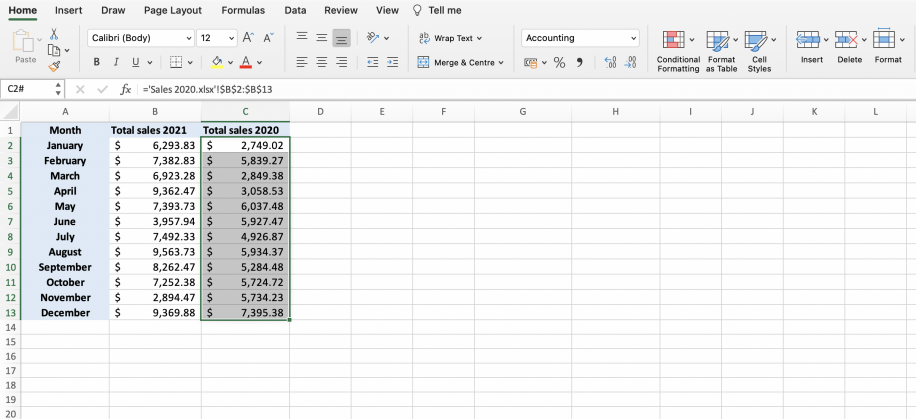5 Ways to Reference Another Sheet in Excel SharePoint

Excel SharePoint is a powerful tool that allows you to manage data across multiple spreadsheets seamlessly. Referencing data from one sheet to another can be particularly useful when you need to consolidate information, automate reports, or simply keep your data organized. Here, we will explore five different methods to reference another sheet in Excel SharePoint, ensuring your work stays both efficient and accurate.
1. Using the Traditional Cell Reference

The simplest way to reference another sheet is by using a traditional cell reference. This method is most effective when dealing with sheets within the same workbook.
- Step-by-Step Guide:
- Open your workbook where you wish to reference data from another sheet.
- Click on the cell where you want the reference to appear.
- Type an equals sign (=) to start a formula.
- Click on the tab of the sheet from which you want to reference data.
- Select the cell or range of cells you want to reference.
- Press Enter.
🔍 Note: Remember that if you move, rename, or delete referenced sheets, the links might break. Always ensure your referenced data stays in place or handle these actions with care.
2. External Data Query (Get & Transform)

For more complex scenarios or when working with external data sources, Excel’s Get & Transform (Power Query) feature can be incredibly useful.
- Steps for External Data Query:
- Go to the Data tab and click Get Data.
- Choose From Other Sources then From Microsoft SharePoint List or From Microsoft SQL Server Database depending on where your data resides.
- Navigate to your SharePoint site, select the list or the database, and load the data into Excel.
- Once loaded, you can reference this data in other sheets using the normal cell reference approach.
| Query Option | Description |
|---|---|
| From SharePoint List | Use when referencing SharePoint list data directly. |
| From SQL Server Database | For data stored in an SQL database connected to SharePoint. |

3. PowerPivot

PowerPivot is an Excel add-in that enhances data analysis capabilities, allowing you to create relationships between different data sources.
- How to Use PowerPivot for Data Referencing:
- Add the PowerPivot tab to your Excel ribbon if not already available.
- Import data from your SharePoint list into PowerPivot.
- Create relationships between different data sets.
- Use DAX formulas to reference and manipulate this data in your Excel workbook.
PowerPivot can handle complex calculations and data from various sources, making it an excellent tool for intricate data analysis.
4. Excel Services (SharePoint)

When you publish your Excel workbook to SharePoint, you can use Excel Services to view, interact with, or reference your workbook data from other SharePoint web parts or Excel workbooks.
- Using Excel Services:
- Publish your workbook to a SharePoint document library with Excel Services enabled.
- Use Web Parts on SharePoint pages to display and interact with your workbook data.
- You can reference specific cells or ranges using named items or URLs within the Excel Services.
⚠️ Note: Make sure your SharePoint environment supports Excel Services for this method to work.
5. Using VBA for Dynamic References

If your referencing needs are beyond what formulas or standard tools can offer, Visual Basic for Applications (VBA) provides a high degree of customization.
- Steps to Use VBA:
- Open the VBA Editor by pressing Alt + F11.
- Create a new module or use an existing one.
- Write a VBA macro that dynamically references cells or ranges from another sheet.
- Assign the macro to a button or execute it when required.
VBA allows you to automate complex referencing scenarios or update references dynamically based on specific conditions or user inputs.
Each of these methods offers unique advantages, tailored to different scenarios of data referencing in Excel SharePoint. By understanding when to use which method, you can make your Excel workbooks more interconnected and dynamic. Whether you're dealing with simple cell references or complex data integration from various sources, these techniques ensure your data management is both efficient and scalable. Remember to consider the nature of your data, your users' access levels, and the complexity of your referencing needs when choosing the right method.
What happens if the referenced sheet is renamed?

+
If a sheet you are referencing is renamed, Excel will attempt to update the reference automatically. However, if the reference fails, you’ll need to manually update the references in your formulas.
Can I reference data from multiple SharePoint lists simultaneously?

+
Yes, you can use Power Query to bring in data from multiple SharePoint lists, create relationships in PowerPivot, and then reference them in your Excel workbook.
Is there a way to refresh data from an external source automatically?

+
Data connections in Excel can be set to refresh automatically at regular intervals, making your workbook up to date with the latest data from SharePoint or other sources.
How secure are the references when using Excel Services?

+
Excel Services uses SharePoint’s security model, which means data security is managed through user permissions set on the SharePoint site.



